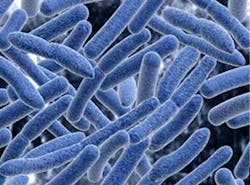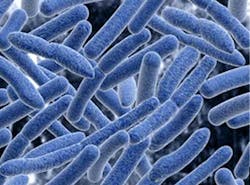What’s new in Perio? Study finds link between periodontal disease and atherosclerosis
Chronic oral infection with the periodontal disease pathogen Porphyromonas gingivalis not only causes local inflammation of the gums leading to tooth loss, but is also associated with an increased risk of atherosclerosis. A study published July 10 in “PLOS Pathogens” reveals how the pathogen evades the immune system to induce inflammation beyond the oral cavity.(1) The researchers conclude, "P. gingivalis modifies its lipid A structure in order to evade host defenses and establish chronic infection leading to persistent systemic low-grade inflammation."(1)
Oral bacteria invade the intestines in liver cirrhosis patients
Newly identified pathogens associated with periodontitis: A systematic review Establishing a microorganism as a pathogen is based on two criteria. The suspected organism must be present in higher numbers in a disease state than a healthy state, and the destruction or eradication of the organism(s) should decrease or end disease progression. The goal of a recent systematic review was to determine the current weight of evidence for newly identified periodontal pathogens based on the results of “association” studies.(3) Almost all bacterial species listed as suspected periodontal pathogens in the study are found primarily in the oral cavity and are rarely involved in extraoral infections. One exception was E. faecalis, which is part of the commensal microbiota of the human gastrointestinal tract, but may also act as an opportunistic pathogen when spreading to other mucosa or skin tissues. It has been associated with root canal treatment failure.(3) The authors proposed that periodontal microbiota may show specific differences among countries. Another result that was mentioned involves the Archaea domain, which also fell into the moderate evidence category in this study. Findings of this and other studies suggest some type of association between the Archaea domain and periodontitis.
The report discusses the concept of “keystone pathogens,” which have the capability to escape host response and cause or sustain the process of periodontal breakdown.(4) For a diagram of the keystone hypothesis involving Porphyromonas gingivalis-induced dysbiosis and periodontal disease, see the Nature Reviews Microbiology website.(5) It is part of an accompanying article.(6) While not producing strong evidence, the results of this systematic review support moderate evidence for the association of 17 species/phylotypes from the bacteria domain, the Candidatus Saccharibacteria phylum, and the Archaea domain with the etiology of periodontitis. These discoveries can guide future investigations on the role of these suspected new pathogens in the initiation and progression of periodontitis.
Diabetes and oral implant failure: A systematic review
The purpose of this systematic review and meta-analysis was to examine whether there are any effects of diabetes mellitus on implant failure rates, postoperative infections, and marginal bone loss.(8) There was a statistically significant difference between diabetic and non-diabetic patients regarding marginal bone loss, favoring non-diabetic patients. A meta-analysis was not possible for postoperative infections. The difference between diabetic patients and non-diabetic patients did not significantly affect implant failure rates. The authors state that studies are not available that include both patient types, with larger sample sizes, that report the outcome data separately for each group. They conclude that the results should be interpreted with caution due to the incidence of uncontrolled confounding factors in the included studies.
Oral mucositis and pain
While not perio, this is a study worth mentioning. Oral mucositis is a substantial problem in cancer patients treated with radiation or chemotherapy, often delaying definitive cancer treatment. For those patients with oral mucositis, pain is the most stressful symptom, leading to loss of orofacial function and poor quality of life. Oral mucositis pathophysiology is not well understood. There are few effective therapies to treat or prevent oral mucositis. The purpose of this study was to describe the current preclinical models of oral mucositis and their contribution to the understanding of mucositis pathophysiology, explore preclinical studies on therapies targeting mucositis and discuss the clinical trials that have resulted from these preclinical studies, and describe the proposed pathophysiology of oral mucositis pain and preclinical modeling of oral mucositis pain.(9)
Oral mucositis and the resulting pain are multifaceted problems. According to the authors, precise preclinical modeling of mucositis is crucial to a better understanding of mucositis pathogenesis.(9) Current models have intrinsic limitations, such as some require mechanical injury to prompt ulceration, and in patients the mucosa does not need to be superficially injured for mucositis to develop. Dose and scheduling of chemotherapy or radiation are also not necessarily interchangeable between animals and humans. Despite the limitations of animal models, preclinical studies on mucositis treatment are well ahead of preclinical studies of oral mucositis pain. Although pain is the most distressing symptom for patients, few studies on mucositis directly address pain. Future studies should measure pain using existing orofacial nocifensive, or perception of pain, analysis.
Maria Perno Goldie, RDH, MS, is the Editorial Director of RDH eVillage Focus.
References
1. Slocum C, Coats SR, Hua N, et al. Distinct Lipid A Moieties Contribute to Pathogen-Induced Site-Specific Vascular Inflammation. PLoS Pathogens, 2014; 10 (7): e1004215 DOI: 10.1371/journal.ppat.1004215. http://www.plospathogens.org/article/info%3Adoi%2F10.1371%2Fjournal.ppat.1004215.
2. Qin N, Yang F, Li A, et al. Alterations of the human gut microbiome in liver cirrhosis. Nature (2014) doi:10.1038/nature13568. http://www.nature.com/nature/journal/vaop/ncurrent/full/nature13568.html.
3. Pérez-Chaparro PJ, Gonçalves C, Figueiredo LC, et al. Newly Identified Pathogens Associated with Periodontitis: A Systematic Review. 2014 93: 846 originally published online 29 July 2014J DENT RES. DOI: 10.1177/0022034514542468. http://jdr.sagepub.com/content/93/9/846.
4. Hajishengallis G. Immunomicrobial pathogenesis of periodontitis: keystones, pathobionts, and host response. Trends in Immunology, January 2014, Vol. 35, No. 1, 3-11. http://ac.els-cdn.com/S1471490613001452/1-s2.0-S1471490613001452-main.pdf?_tid=61308e1c-2cc0-11e4-a584-00000aab0f6c&acdnat=1409016730_00cb4b4b9b226a22d0810564a45d6893.
5. http://www.nature.com/nrmicro/journal/v10/n10/fig_tab/nrmicro2873_F2.html.
6. Hajishengallis G, Darveau RP, Curtis MA. The keystone-pathogen hypothesis. Nature Reviews Microbiology 10, 717-725 (October 2012). http://www.nature.com/nrmicro/journal/v10/n10/full/nrmicro2873.html.
7. Ng N, Kaye EK, Garcia RI. Coffee Consumption and Periodontal Disease in Males. Journal of Periodontology, Volume 85, Number 8, 1042-1049, August 2014.
8. Chrcanovic BR, Albrektsson T, Wennerberg A. Diabetes and Oral Implant Failure: A Systematic Review. 2014 93: 859 originally published online 13 June 2014J DENT RES. DOI: 10.1177/0022034514538820. http://jdr.sagepub.com/content/93/9/859.
9. Viet CT, Corby PM, Akinwande A, Schmidt BL. Review of Preclinical Studies on Treatment of Mucositis and Associated Pain. 2014 93: 868 originally published online 18 June 2014J DENT RES. DOI: 10.1177/0022034514540174. http://jdr.sagepub.com/content/93/9/868.



